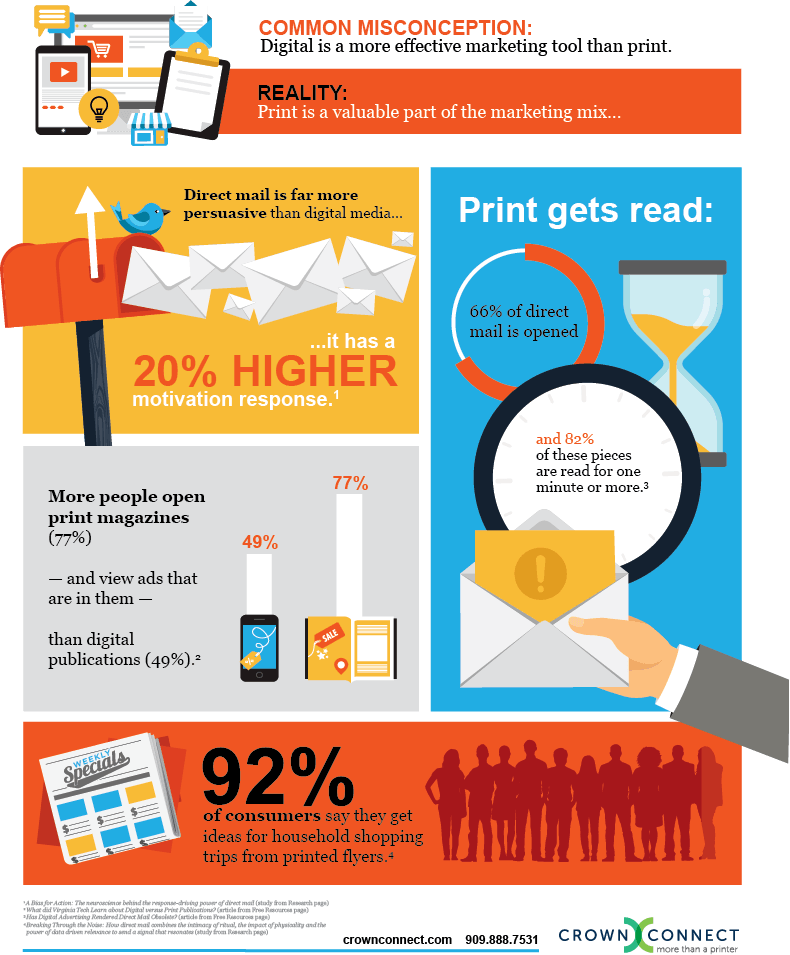
- You are here:
- Home »
- Crown Advantage
Print vs. Digital - Which is More Effective?

- You are here:
- Home »
- Crown Advantage
The ME Movement
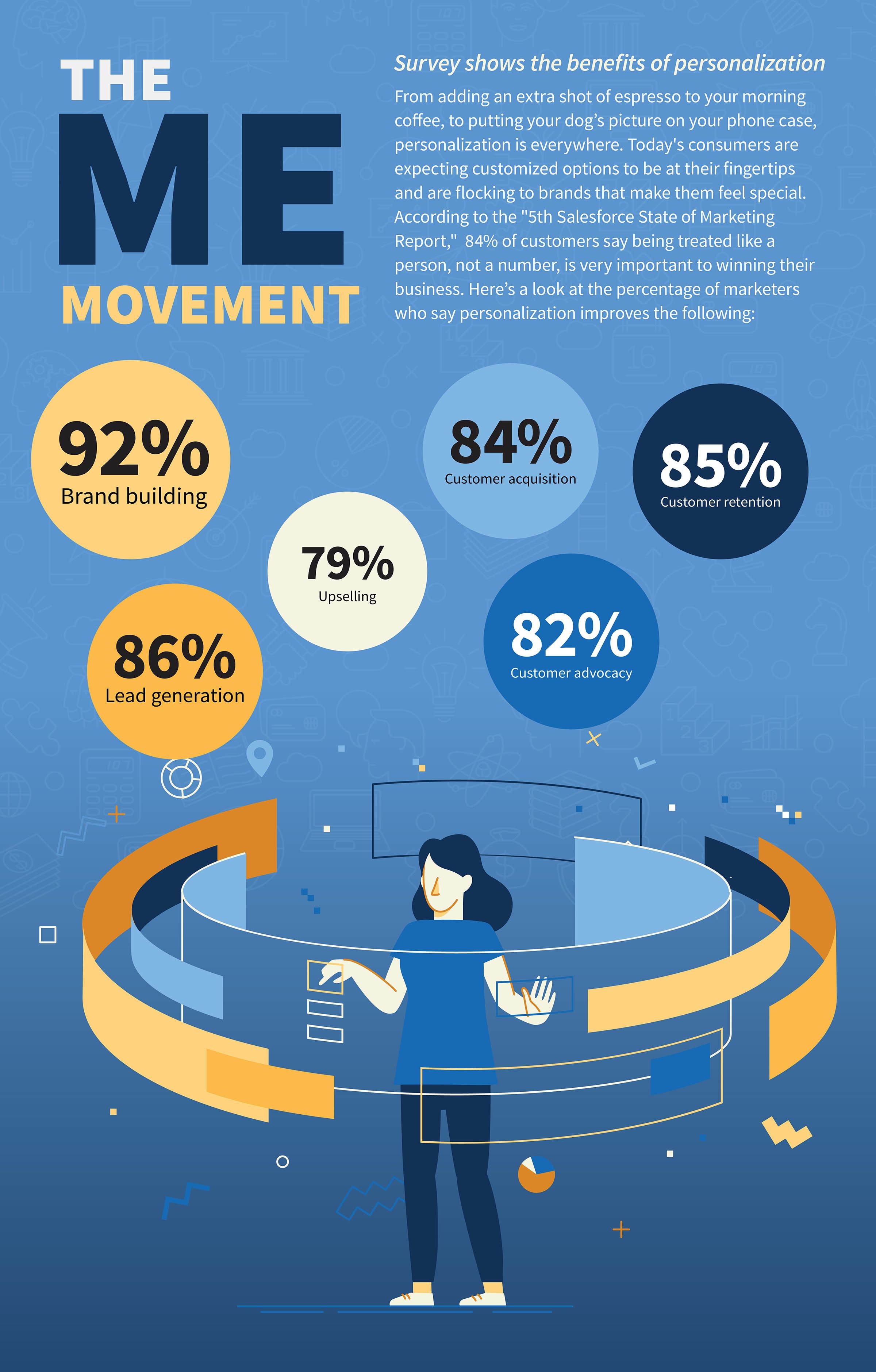
Let us know how we can help!
- You are here:
- Home »
- Crown Advantage
Why Saying "Thank You" Matters
Remember the last time a client, a boss or a co-worker gave you a handwritten thank you note to say you were doing a good job? What about a client? Has one ever slipped you a gift card worth the price of a cup of fancy coffee just to show you their appreciation?
It felt good, didn't it? The gesture might even have prompted you to keep up the good work. You might have thought back to that gesture when you toyed with moving to a different company or switching to a cheaper vendor.
A gesture of appreciation does not have to be a gift. Simply saying “thank you” can go a long way toward improving morale, retaining valuable staff members and keeping your clients coming back. In fact, in survey after survey, more than 20 percent of employees have said:
If they do not feel recognized for doing good work, they have recently applied for a different job—compared with 12 percent of employees who do feel recognized.
More appreciation from the boss would make them happier at work.
They prefer written or verbal “thank you's” over extra time off or gifts.
Saying “thank you” is a simple but powerful gesture. It can lay the foundation for a positive relationship with management, subordinates and co-workers when the time comes for you to ask someone to go the extra mile.
Showing appreciation builds goodwill. People appreciate being appreciated. Someone who feels appreciation from you is more likely to return the gesture by agreeing to your requests. They want to let you know that they appreciate you, too.
Professional salespeople—at least the good ones—know this. They keep in touch with their customers long after the sale is made. They thank them for their business. They check later to ask if the customers are happy with their major purchases. They ask what else the customer might need that they can offer.
It is all part of creating a “customer for life,” and it is a strategy that any employee, manager or vendor can imitate in an effort to create good working relationships and agreeable clients, staff and co-workers.
I employ a practice of my own that works for me. As a small business owner, I handwrite thank you notes on fancy paper and mail them in time for Thanksgiving delivery each year to every client, employee and vendor I have ever done business with—even former ones.
When I find myself in need of a favor, a discount or a rush job, they’re happy to help me, especially if someone gives you something you really want, like a raise, a promotion, a job or new business, it’s important to show your gratitude. In fact, most hiring managers say they expect a thank-you email from every job applicant who got an interview.
Even if you did not get the raise or job you asked for, show your gratitude to the person who spent time and consideration on your request. And do not show that gratitude just once. Continue to follow up with everyone who has helped you or considered it.
That kind of follow-up not only sets you up for positive results with this person in the future, but it signals that the professional relationship you want reaches far beyond a single transaction. It says you care enough to stay in touch.
You don’t have to spend a ton or money or time saying “thank you.” Simple gestures can be just as powerful as grand ones. For example:
A note—handwritten or via email—that includes a specific reference to something the recipient did for you or talked to you about can elevate a casual business relationship to a more important one.
After crashing on a deadline, an in-person pat on the back for a job well done—again, with specific mentions of achievements—lets an employee know that you notice and appreciate hard work.
Posting a positive online review for a company or a service professional takes just minutes. But its impact can be enormous if it results in additional business for the vendor.
Returning a favor after someone has done one for you tells the other person that the relationship is not one-sided.
Some sincere words of appreciation can pick up an employee or coworker who is showing signs of burnout or depression.
A gift card worth as little as $5 is still a gift. Hand them out to people who serve you year-round, like the person who delivers packages to your office, the agent at the rental-car company you frequent or the receptionist in the lobby of your building. Don’t wait for the holidays; make it a surprise.
When you say “thank you” to someone who said “yes” to a request, you pave the way for the next “yes.” Follow the lead of the most successful sales professionals whenever someone gives you something or does something for you: Realize that hearing a “yes” isn’t the end the deal. It’s the start of the next one.
BIO
Cindy McGovern, Ph.D., known as the “First Lady of Sales,” speaks and consults internationally on sales, interpersonal communication and leadership. She is the author of "Every Job is a Sales Job: How to Use the Art of Selling to Win at Work." She also is the CEO of Orange Leaf Consulting, a sales management and consulting firm. For more information, visit, www.drcindy.com and connect with her on Twitter, @1stladyofsales and LinkedIn.
- You are here:
- Home »
- Crown Advantage
What Did Virginia Tech Learn About Digital Versus Print Publications?
Facing budgetary pressures, many organizations are considering changing their print magazines to online publications. A recent Virginia Tech study, however, indicates that this might not be wise.
Subscribers to Virginia Tech’s alumni publication were sent either a print version of the magazine or an email invitation linking to the online version of the magazine, and then contacted by telephone and asked a series of questions about the publication. The results showed that:
More people remembered getting the print magazine—Only 49% of those who received the online version remembered getting the email, while 82% of those who received the print version remembered receiving it.
More people opened the print magazine—The print magazine was viewed by 77% of those who remembered receiving it, while only 49% of those who remembered receiving the online invitation actually clicked through and viewed the publication.
More people remembered articles from the print magazine—Respondents who viewed the print version recalled a significantly greater number of articles than did those who viewed the online version.
All in all, the print publication appeared to be more effective than the online publication. As the author surmises, “ceasing a print publication in favor of an online-only publication might hurt the effectiveness of an organization’s marketing communication, and managers should not make the decision based on cost alone.”
- You are here:
- Home »
- Crown Advantage
Print Engages Customers
Surprisingly, Millennials—the most digital-savvy generation—find print particularly engaging.
- 58% of Millennials enjoy looking at ads in magazines.1
- 49% made a purchase because of something in a magazine.2
- 49% of Millennials took print coupons with them to the store in
the past 30 days.3 - 82% of Millennials read direct mail from retail brands.4
- 50% of Millennials love and look forward to receiving retail
catalogs.5 - 49% of Millennials wish that some companies they do business
with had a catalog.6 - 40% of Millennials buy more from companies when they
receive a catalog.7 - 42% of Millennials prefer political mail over other forms of political advertising, and political mail prompts them to take action. Because of political mail, 66 percent of millennials are likely to research the candidate, with 54 percent visiting the candidate’s website. 8
1-7Quad Graphics, “Millennials: An Emerging Consumer Powerhouse,” December 2015
8 United States Postal Service and the American Association of Political Consultants (AAPC), “Political Mail and Millennials: Young Voters Paying Close Attention to Direct Mail,” May 2016
- You are here:
- Home »
- Crown Advantage
Questions to Ask When Planning Direct Mail Campaigns
Asking the wrong questions or nothing at all, can lead to poor direct mail response and possibly a failed marketing campaign. The right questions and the answers they generate, will help us empower our creative team to think outside of the box and create a more effective mail piece for you. Below are some of the questions you should ask.
What are our goals?
Make a list of each goal so that everyone on the marketing team knows them and why they are important.
What are the advantages derived from our last mailing?
List any of the positive things that occurred from your last mailing. This could include; results, mailing list, images, etc. Make sure to be specific.
What are the disadvantages discovered in our last mailing?
List anything that negatively affected your last mailing, and be specific.
What ideas do we need to improve on?
List any suggestions that you feel could have improved the results of your last mailing. Do not filter any thoughts at this time, just write them all down as you see them.
What do customers expect from us?
Make a list of what your customers expect from you and the products and services you provide. If you don’t know their expectations, you need to ask for them.
What are the most powerful benefits of our products and/or services that we are able to provide to our customers?
List all of the benefits you provide in order of importance. Which ones relate best to your individual customers?
What is our customer’s greatest pain?
In order to solve problems for your customers, you need to know what they are and which ones are keeping them awake at night. List them in order of importance, the largest to the smallest.
How can our products or services relieve that pain?
Use the list you just created and find a solution for each problem.
How certain are we about whom our customers are?
Are you making assumptions or do you know the origin and reasons you have information about your customers. You won’t know your customer until you know that the information you have about them is accurate.
What are our design possibilities?
Now is the time to get creative. Design can make the difference. List all the fun ideas you believe will make your mail campaign more interesting and relevant. During brainstorming, do not scratch anything off the list. Just compile all the ideas you feel will enhance your program and whittle them down later.
What are we missing?
There is always something lurking in the backs of our minds that we may have forgotten. Make sure to take the time to scan your brain and try to determine if something is missing. That’s what “think tanks” are for.
What are our competitors doing?
You can always sign up for the mailing and email lists of your competitors, using a fictitious name. Keeping tabs on what your competitors are doing, can help you shape your own mail strategy. You can avoid their weaknesses and exploit their strengths.
What resources do we need?
Many times you will not have everything you need at your fingertips. Create a list of all of the external resources available to you. That way you will have a quick reference of the external resources that can help to assure you the greatest degree of success.
Do we need help from outside of our organization?
Most organizations are not able to execute a successful mailing campaign without outside help. Make sure you have trusted partners who can effectively provide all of the elements you need to complete and deliver your project on time.
All mail campaigns are not created equal! Nor do all campaigns yield your desired results. It is of paramount importance that you continually critique and monitor your return on investment. You must build on the positive and tweak the elements of the campaign that is not working for you. The only good campaign is a campaign that provides you with the results that you desire!
Are you ready to get started? We have the solutions!
- You are here:
- Home »
- Crown Advantage
Crown Connect Wins Print Excellence Awards
On April 13, the Printing Industries Association of Southern California (PIASC) hosted Graphics Night 2018. This gala event, held at the elegant Pacific Palms Resort, celebrated winners of the 2018 PIASC Print Excellence Awards and was attended by CEOs and representatives of many leading Southern California printing companies.
At the end of the evening Crown Connect brought home four “Best of Category” awards for their entries in Large Format, Business Card, Self Promotion and Invitation Printing.
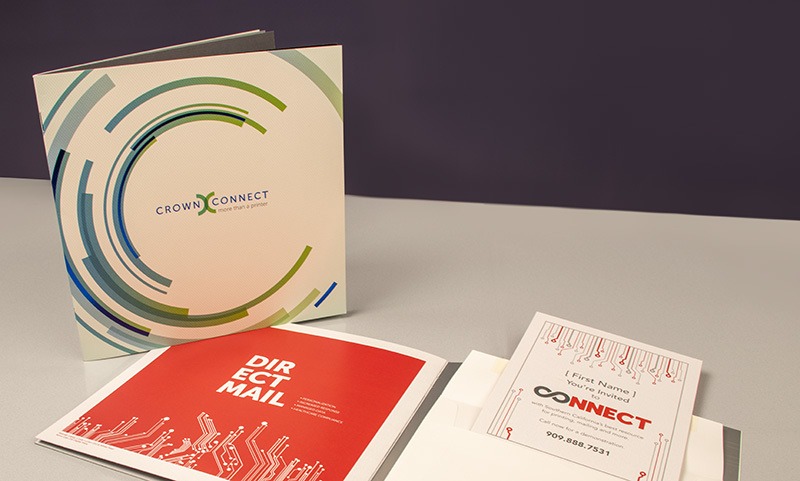
Best of Category: Self Promotion — Crown Connect Brochure
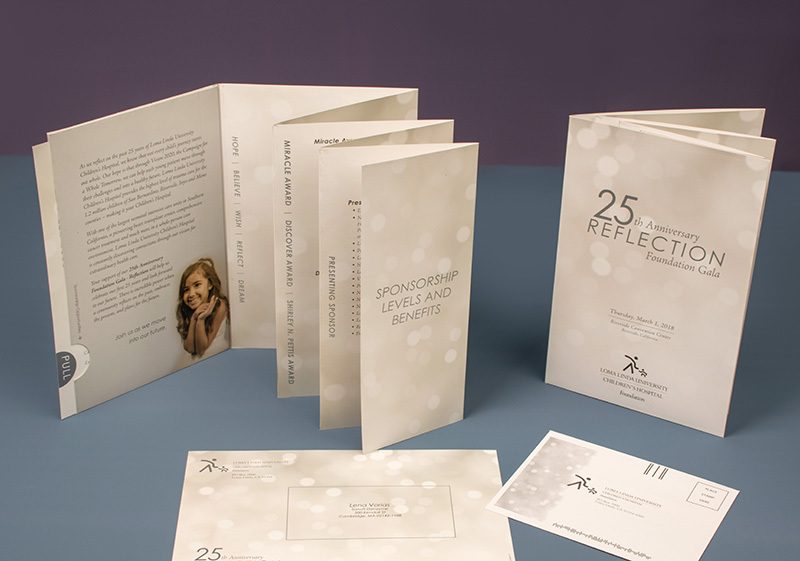
Best of Category: Invitation — 25th Anniversary Invitation Package
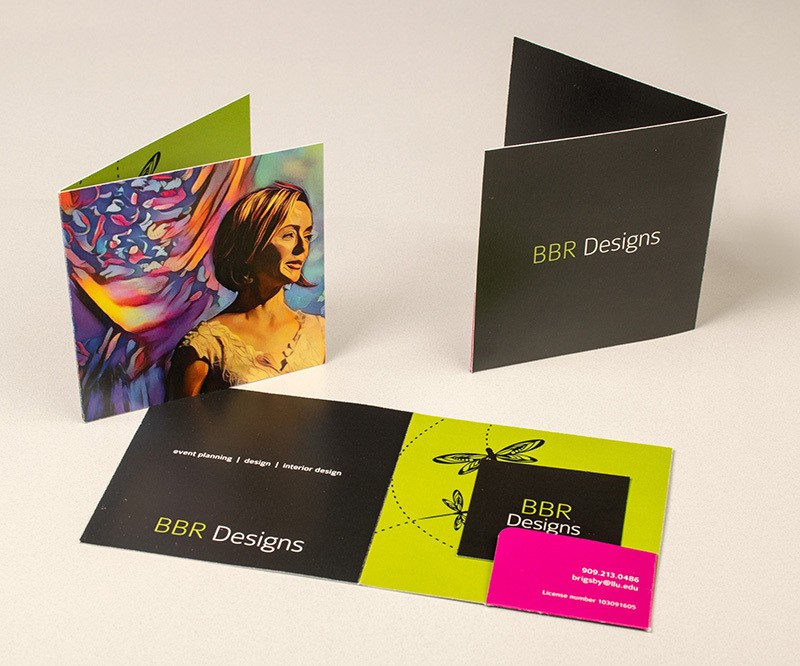
Best of Category: Business Card — BBR Designs Business Card
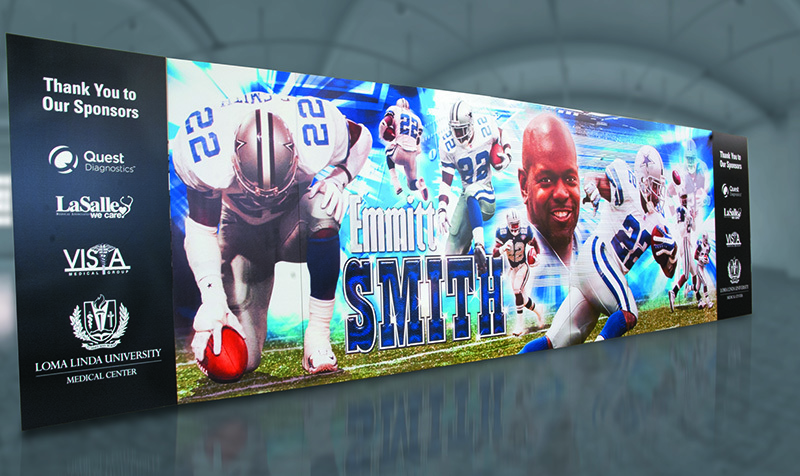
Best of Category: Large Format Printing — Emmitt Smith Display
- You are here:
- Home »
- Crown Advantage
Why You Won’t Stop Getting Direct Mail
Some chains—and even online startups—have learned they risk losing business without a steady flow of weekly circulars to nudge shoppers.
One old-school retailing trick has survived the e-commerce shakeout—the lowly advertising circular.
Some grocers and other retail chains have learned they risk losing business without a steady flow of paper mailings nudging shoppers to stores. Even online startups that don’t have physical shops are embracing the idea.
Paper ads that arrive in homes spur more buying than emails or texts, said Jackson Jeyanayagam, chief marketing officer of Boxed.com, an online seller of household goods. “Email is starting to become a sandbox because you get so much,” Mr. Jeyanayagam said. Boxed spent 80% more on print advertising in 2017 compared with 2016 and says it now makes up about 12% of the marketing budget.
Most retailers still see digital advertising as a growing focus of their spending, and many continue to cut back on traditional print ads as well as mailers. But more are also experimenting with new ways to send out deals on paper, sometimes mining online behavior or databases of shopper trends to improve their direct mail.
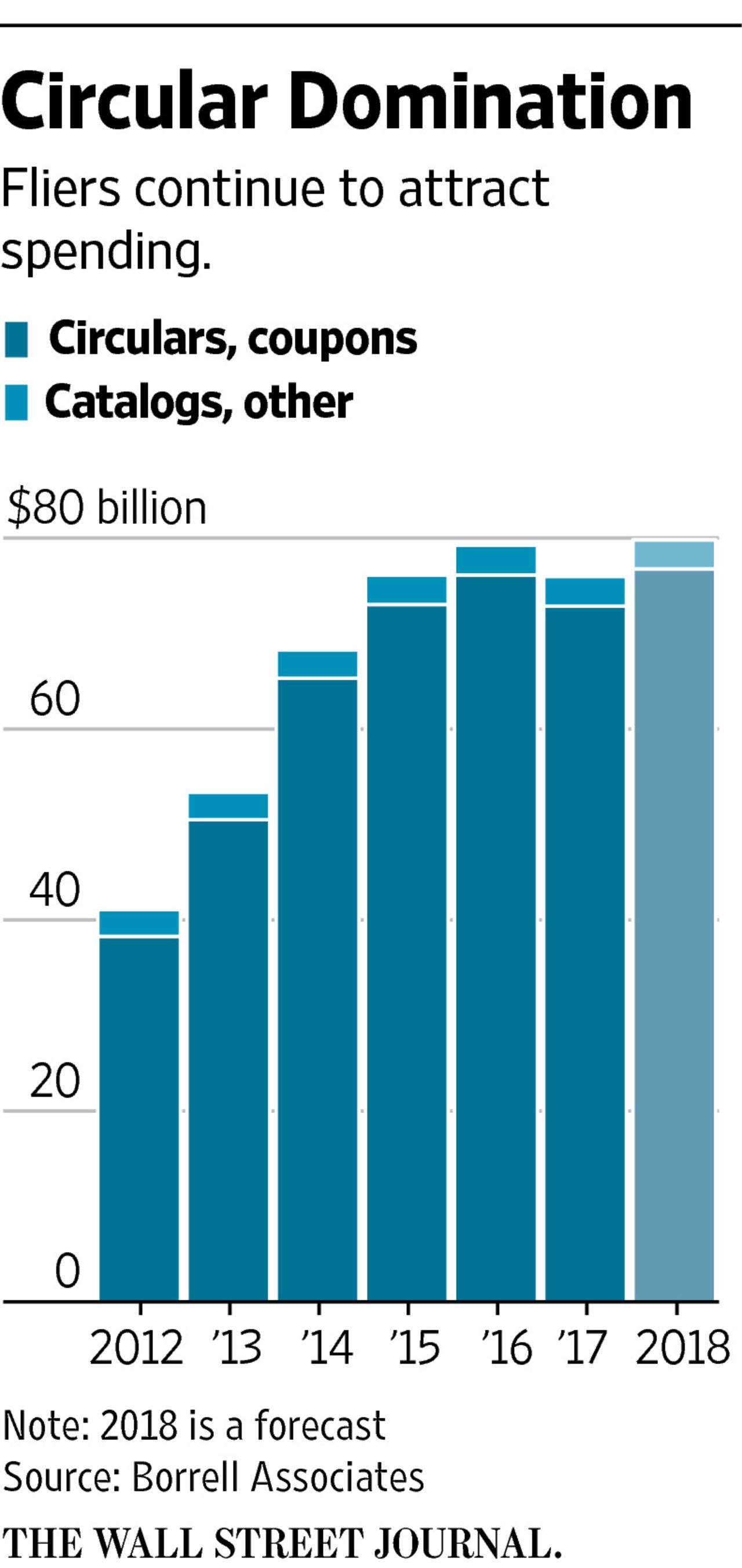
PebblePost, a New York City marketer, uses online browsing and buying data from retailers and brands to send relevant coupons and ads to homes within a few days. For example, it might send a printed offer for free shipping if a shopper browsed a site without buying, said Lewis Gersh, chief executive of the firm.
At Jet.com, the e-commerce site that Wal-Mart Stores Inc. bought in 2016, direct mail makes up 10% of the media budget and is the online retailer’s largest offline marketing expense. Jet sent around 35 million paper coupons and mailers last year, which are effective in reaching new and repeat shoppers as the company tries to attract more urban, affluent shoppers, said Emily Frankel, senior director of digital marketing.
Annual spending on newspaper circulars, coupons, direct mail and catalogs hit about $76 billion in 2017, slightly lower than the previous year but up 85% versus 2012, according to Borrell Associates, a media consulting firm. The firm expects spending on some forms of mailed ads to fall as the U.S. Postal Service raises rates in coming years, said Kip Cassino, executive vice president at Borrell.
For now, paper fliers keep piling up on doorsteps because most people still read their mail, even as they easily ignore most online banner ads and many emails. Product manufacturers support the system by paying for coveted circular space. Retailers often ask suppliers to reduce prices of items they plan to feature in a mailer, or require a marketing fee—a source of revenue.
“Some get caught in a bit of a death spiral of promoting,” said Nick Goad, global lead for pricing and promotions at the Boston Consulting Group. Once retailers and their suppliers get hooked on sales boosts from circulars, it’s hard to stop. “It’s a little bit of a drug,” Mr. Goad said.
Early last year, visits to Costco Wholesale warehouse stores slowed slightly after the retailer sent fewer paper pamphlets touting deals. “We decided to change back immediately,” said Costco’s finance chief, Richard Galanti. Still, Costco made adjustments, offering deeper discounts on fewer products that it hopes will better drive sales, Mr. Galanti said.
Grocers usually pick which products go on the front of circulars based on a mix of past sales, deals with suppliers and gut instinct. That’s why meat dominates the cover during summer barbecue season, chips around the Super Bowl and candy before Halloween.
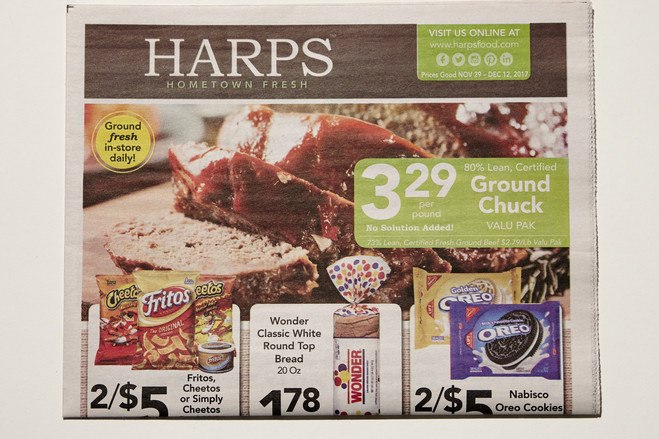
Now some chains are trying to make circulars more precise. “Smart retailers are marrying predictive analytics with circulars,” said Michael Osborne, Chief Executive of SmarterHQ, a digital marketing firm based in Indianapolis. Consumers buy more when they “receive promotions and discounts on items that they may actually be interested in.”
Harps Food, a Springdale, Ark.-based chain of 87 stores, last year started using Canadian data-analytics firm Daisy Intelligence to review which products should be featured in its frequent circulars, said David Ganoung, vice president of marketing at Harps. “Our print circular is our largest advertising expense and you want to be as efficient as you can.”
Harps has used the data from Daisy to expand the range of advertised products, often adding more produce, Mr. Ganoung said. The grocer also can measure how a circular deal influences what else a shopper might buy, he said. “So I put a hot price on Yoplait. Did I cannibalize from a regularly priced Chobani product that the shopper was already going to buy?”
Sarah Nassauer for Wall Street Journal
- You are here:
- Home »
- Crown Advantage
7 Elements of Print Advertising
A good print advertisement can present your product to new eyes. Successful print ads convey information about your products and store. They include a clear and specific offer, along with information about how readers can act on that offer. Not all print ads are created equal, however. In order to maximize your investment, include all of these elements in your advertisement.
The Offer
A good print advertisement offers readers an immediate benefit or reason to learn more about your product. This can be anything from a hot new product to a sale or limited-time discount. Your offer is the hook that draws the reader in and it should be the focus on your ad.
The Headline
The ad title offers a short, snappy preview of what the reader will find in the copy. Your headline explains to the reader the key benefit or offer you are providing. In general, headlines are the largest part of the advertisement. A good headline keeps a potential customer reading; a weak headline and the customer turns the page.
Image
A print ad includes one or two striking pictures that illustrate your offer. If you are offering a free product, your ad should include an attractive photo of the product. If you are highlighting a hot new product or sale, your image should be of that hot new product. If possible, run your images in color to draw in readers.
The Body
The body of your ad includes details about your offer, details about your store or product and any other information you want to highlight. Keep your body text short and easy-to read. Use bullet points or subheadings to break up the text. Readers want to get the information they need as quickly as possible.
Call to Action
Include a sense of urgency in your ad. Don't just tell readers about your product, urge them to take action in order to benefit from your offer. Set a time limit and clear, concise instructions for what readers should do. Call to action statements include: "Call Today to Reserve Your Copy," "Only 100 Copies in Store, Come in to Reserve Yours" and "Only the First 50 Customers Receive a Free T-Shirt, Come in Today."
Contact Information and Store Logo
Your ad should include the address and phone number for your store, along with any other information a reader needs to follow through on your call to action. Also include a logo for your product to build up brand recognition.
Smart Ad Placement
Once you've designed a successful advertisement, place it in publications that reach your target market. Before you place your ad, ask the publication for statistics on their demographics. Choose a publication that reaches potential clients who are the right age, demographic and income bracket.
